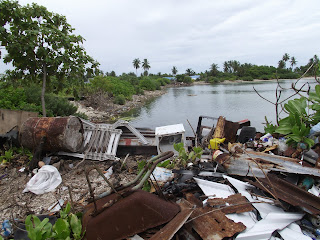It been almost 14 years since the Conference of Parties to UNFCCC met in Kyoto, Japan which gave birth to infamous Kyoto Protocol. It was the very first legal framework to combat climate change born out of the convention and as it is now the only one. Kyoto Protocol has been a source of controversy ever since it came into existence. Kyoto Protocol is based on the following principles:
- · Emission reduction commitments from Annex I countries (developed countries)
- · Implementations of supplementary mechanism that would help Annex I countries to achieve their commitments. These mechanisms is better known as Clean Development Mechanism (CDM), Joint Implementation (JI) and Emission Trading System (ETS)
- · Establishment of adaptation fund to assist developing countries to adapt to climate change
- · Accounting, Reporting, Reviewing and compliance of the commitments
Kyoto protocol has tried to address all aspects of the struggle against climate change, but it is far from complete. Especially when the biggest GHG emitter at the time refused to take part, i.e. America, in the protocol and forming an umbrella group with countries of similar mindset. In this context it is strange that in formulating the protocol Americans gave huge inputs. And over the period of last one and half decade all new sets of problem has cropped up like countries who championed Kyoto Protocol like Japan, Russia, Canada has expressed their disdain for the extension of protocol. And they have good reason to be so. That is;
- · The resources put into achieving the commitments have put huge burdens on their economy and in some cases economy has shrunk. And still could not achieve the targets
- · They are no longer the only large emitters with emergence of China, India, Brazil, Mexico, South Africa, Indonesia, Korea and etc who are non-Annex I as larger emitters and do not have a commitment.
- · And the fact that zero emission from Annex I would not have enough impact achieve the required levels of Global emissions.
Thus it is apparent there needs to be some major changes required. But there is some serious opposition to the changes to Annex I list to include all major emitters or to have legal commitments as before. Although, there are no provision that would enable the COP to punish a country for not adhering to their commitment under the protocol (making Kyoto protocol a toothless one).
The COP has been going back and forth about the improvement and extension of KP under the alias of AWG-KP. At the same time discussion is going on a separate negotiation track under the convention AWG-LCA to have a new agreement which could supplement or even replace the KP. AWG-KP now has a little over one year(deadline is 2012), to formulate a mutually agreeable terms for the KP extension (2nd Commitment Period), endorse within the COP and give enough time for enough number of parties to ratify it within their government. Given the 7 year time frame taken by the parties from adoption of KP to enforcement of KP, it is widely agreed that one year might not be enough to adopt and enforce the extension of KP. And having a gap between CP1 and CP2 of KP is not acceptable to many parties. And the gap could a reason to kill the KP.
So, in conclusion, KP talks have been delayed too much and any more delay would lead to a gap between CP1 and CP2. And the COP has just one year and 2 COP meetings to resolve the issues and save the KP. There are still ambiguities about KP, but one thing is for sure the decision whether KP lives or dies will be decided in COP18 in Durban










